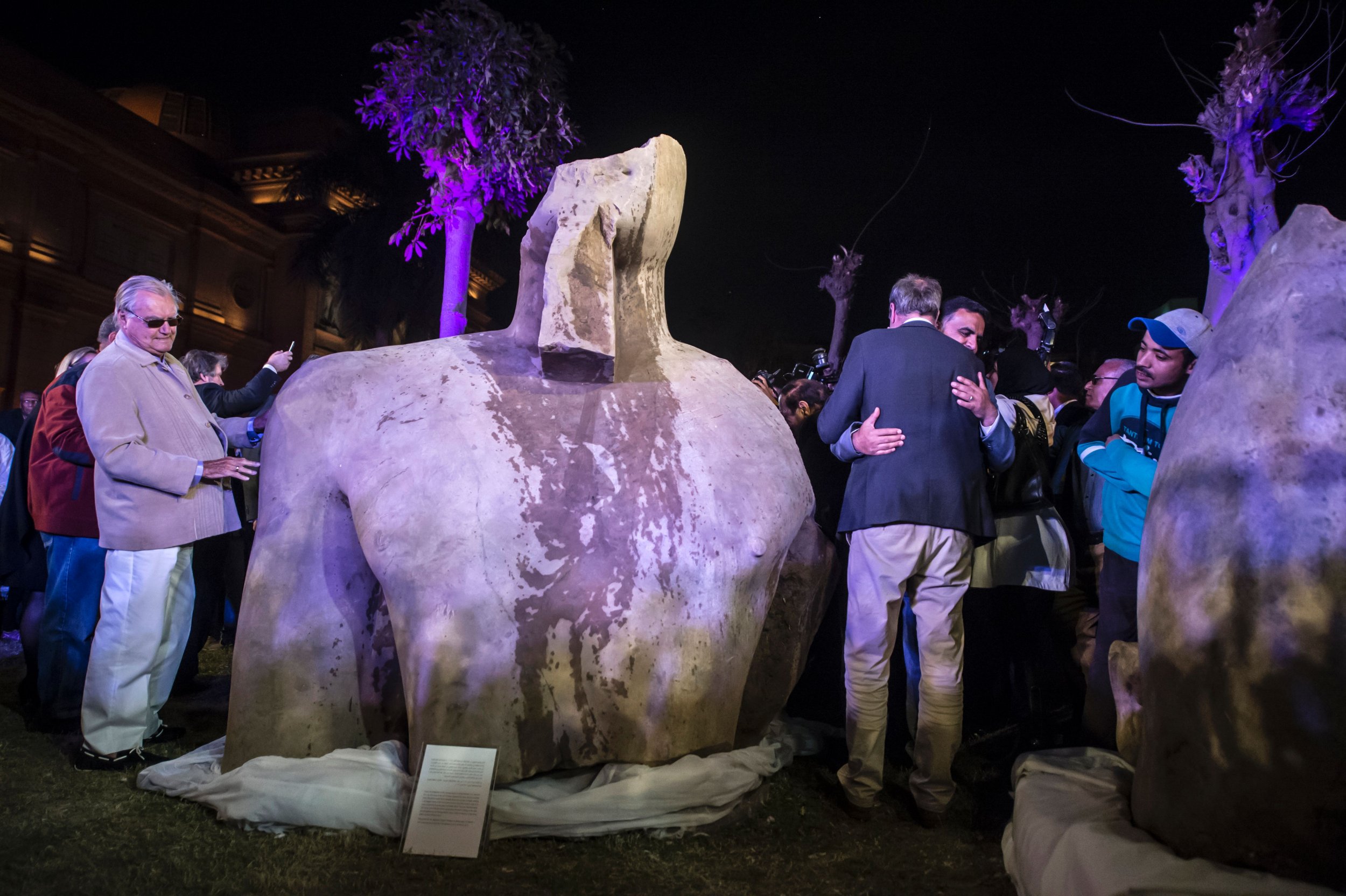
Egypt's antiquities minister has said that an ancient relic found in a Cairo mudpit is likely not of Pharaoh Ramses II, but is probably from the statue of another Egyptian king who ruled in the seventh century B.C.
A team of Egyptian and German archaeologists announced the discovery of two ancient statues on March 9, which were found submerged in groundwater in a pit in Cairo's el-Matariya district, the site of the ancient city of Heliopolis.
One of the statues—which was originally 9 meters long and consisted of a bust, the lower part of a head and the upper part of a head—was identified as probably coming from a statue of Ramses II, one of ancient Egypt's most famous rulers who reigned during the 13th century B.C. The relics were found close to a temple dedicated to the pharaoh.
But at a showcase of the statues Thursday, Antiquities Minister Khaled el-Anani said that further analysis of the relics showed that they likely belonged to a later period and suggested that Psamtek I, a lesser-known Egyptian king who ruled from 664-610 B.C, was the probable subject.
"We are not going to be categorical, but there is a strong possibility that it's of Psamtek I," El-Anani told reporters, according to the AP. "There is a possibility, albeit small, that Psamtek I reused an older statue that may be of Ramses II."
The minister added that while the enormous size of the statue was typical of Ramses II, but hieroglyphs discovered on the statue after it was raised from the mudpit indicated that it was of a later era and, specifically, of Psamtek I. El-Anani said that several other features—particularly the shape of the crown, ear and eye, and the elongated face—suggested a later date than Ramses II.
The other statute found in the original discovery was an 80cm bust of King Seti II, the grandson of Ramses II.
The statues will eventually go on display at the Grand Egyptian Museum, due to open in 2018.
Uncommon Knowledge
Newsweek is committed to challenging conventional wisdom and finding connections in the search for common ground.
Newsweek is committed to challenging conventional wisdom and finding connections in the search for common ground.
About the writer
Conor is a staff writer for Newsweek covering Africa, with a focus on Nigeria, security and conflict.
To read how Newsweek uses AI as a newsroom tool, Click here.








